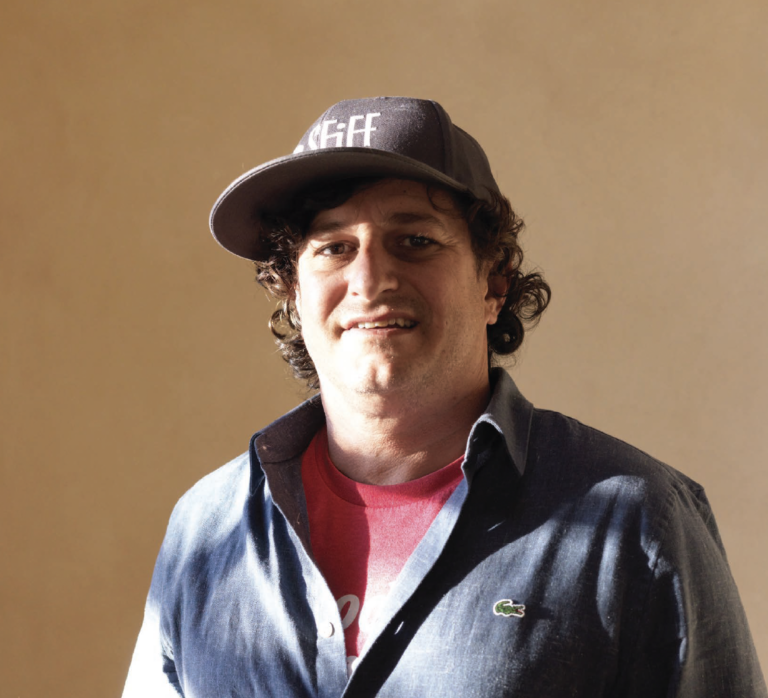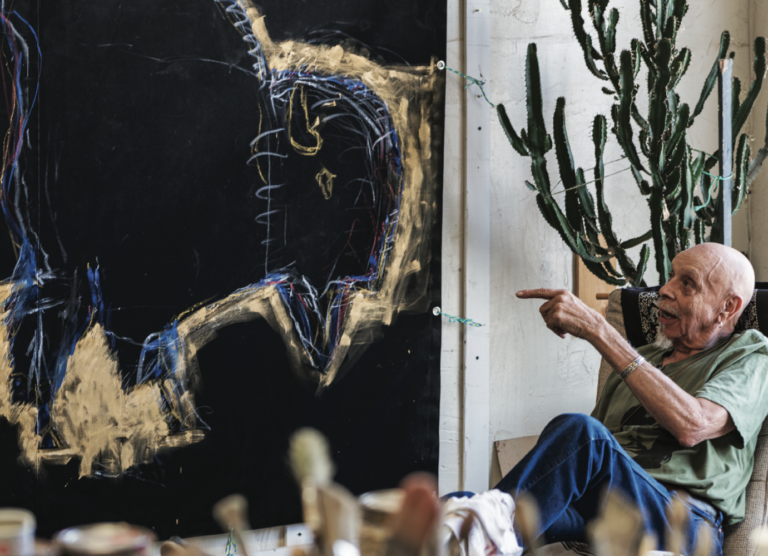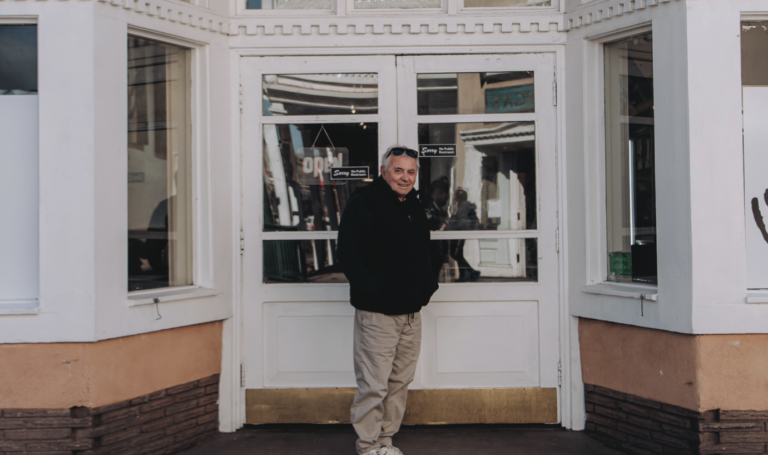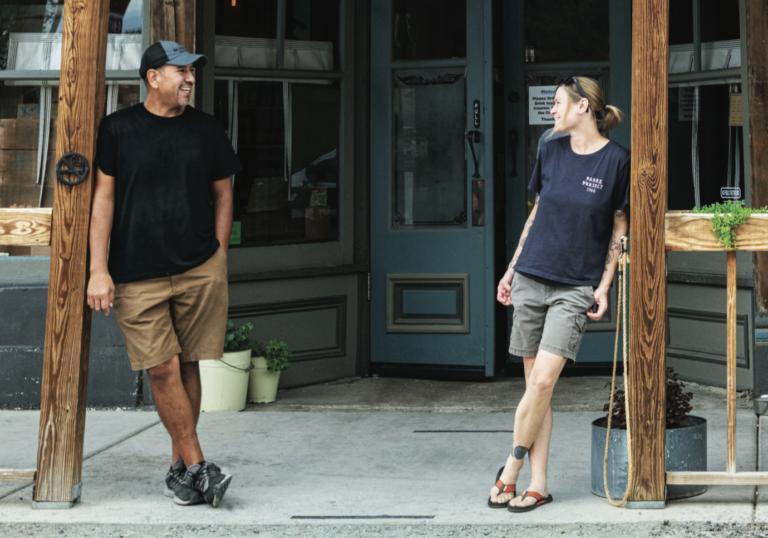LOCAL BOY SHEHAN PRULL WAS GETTING ANTSY. So he took his love of blacksmithing to Japan, where it remains a considerable art. Well, he thought that’s what he was doing, but it morphed into making knives, for reasons only he can explain. Fast-forward to now: Shehan’s Rufina Street shop turns out some of the most renowned kitchen knives in the country.
You started studying blacksmithing at twelve. What was it that appealed?
On the surface, blacksmithing is inherently romantic, nostalgic. I had that young boy attraction to tools and machines, to fire, to clanging noises and making things.
But when I look back on it, what stands out is that I wasn’t put off by all of the things that are not what they appear to be on the surface. It is physically hard. Everything is heavy. It is incredibly loud. There are fumes and sparks. You get burned. But I was OK with all of that. I actually rather enjoy coming home filthy. Drove my parents crazy. There was something satisfying about coming home looking like a chimney sweep.
But I also had this predisposition toward patience. I’m inherently less drawn to instant gratification. I liked things that you could only have by spending enough time and going deep enough to get there. I liked making a thing of quality, one that takes time.
So knives. You went to Japan to learn kniving?
No. I thought maybe I could combine metal and my interest in Japan and go there to study and make some kind of obscure agricultural implements. I wanted to make something traditional and unpretentious, and there are some very interesting Japanese shovels and hoes and sickles, the forging of which is comparatively complex and interesting.
Knives, on the other hand, seemed simple and repetitive, so I specifically was not interested in that. But as it happened, when I actually did move to Japan and started wandering around the countryside, going to real blacksmith shops – of which there are still thousands – it turned out that the knife industry proved to be the craft in Japan that was still profitable enough for someone to take on an apprentice. A master knifemaker, Hiroshi Ashi, agreed to sponsor me. I studied and practiced with him and many artisans in the city of Sakai, renowned for its cutlery and bladesmithing.
In Japan, something happened. I doubled down on my commitment and the sense of identity and personal fulfillment through the work because that’s how Japanese craftspeople work. We worked six days a week from nine until seven.
I felt good, fully applying myself without inhibition or self-consciousness to learn and excel at the craft. At the same time, there was a vulnerability to that, a fear of failure. What if I try my hardest and the result is mediocre? Then I’m mediocre. That sort of thing holds a lot of people back, and it held me back for a long time. But that fell away in Japan; I wholeheartedly embraced it all.
In its simplest form, somehow I came into the understanding that you have to be an apprentice, you have to make all the mistakes and be really bad at everything, you have to do that really full-heartedly, you have to put all of yourself into being bad at it when it’s your time to be bad. And then you get a little better, and you have to completely embrace that. And only if you do that can you get to the point where you begin to master it. You can’t get there by fixating on mastery. Don’t worry about being an expert, just do apprentice when it’s time to do apprentice.
So what makes a good knife?
It’s subjective. I’m most frequently discussing this with people who have a collection with many thousands of dollars of knives from around the world, and they have all developed opinions that are so specific and so minute that it gets pretty subjective. And so I end up discussing very, very small details of dimension, thickness, curvature, hardness, steel type.
But at the most basic level, it’s very simple and then immediately very mysterious. What does it mean to cut something? What’s really happening on the physical level of atoms and molecules? What are we witnessing? What makes one thing cut better than another? Effective cutting ability can generally be reduced to how acute, how sharp physically is it, while having enough strength to hold up to the action.
Another way to look at the question might be, What is different between my knives and a $7 knife at Target? Part of it is the story behind the knife.
Bertrand Russell said that he enjoyed apricots more since he learned that the Chinese introduced them to India, then they spread to Persia, then to Rome, and that the word apricot is derived from the same root as precocious because the apricot ripens early. To him, this makes it taste better.
Yes, exactly. You’re getting something that was made by a person in an artisanal process where we make the charcoal by hand and do the whole forging process in our shop. And you get to bring that into your space, into your life. And can you just tell? Do you really have to know the apricots came from China, or can you somehow taste it? Can you know without knowing? I think when you pick up a knife that is handmade, you can tell.
Is there something meditative about the repetition of making a knife?
The thing that first put me off about kniving is that the forms are very simple and the function is the same for all knives. I mean, you change the geometry to match the application, but it’s basically the same. This repetition was a negative to me. Grinding, grinding, grinding, over and over and over.
Then a big shift happened where I found an aspect of that that was valuable. Now, I use it like the proverbial canary: When I’m stressed out, I don’t find joy in the repetition. It feels like, Come on, come on, I need to get this done. It’s a warning for me to take a step back and make enough space so I get into that groove and feel a meditative, rewarding aspect of the repetition.
Learn more at shihanfineknives.com
Photo Ryan Heffernan









